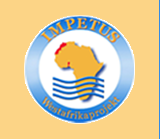| |
|
Published figures
In the public literature a lot of information with regard to the malaria disease can be found.
On this page the user can get access to a lot of published figures that have been extracted from
the literature. The archive shall provide helpful malaria information that can serve for
individual efforts. The provided figures might help identifying relevant articles.
Unfortunately, due to copyrights the available pdf-documents are not linked.
The figures are presented together with some more information regarding the performed study
and are arranged into categories.
General information
Spatial distribution
Impact of climate change
Field studies
Information regarding mosquitoes
Mosquito survival
Published data
All across Africa the studies of Keiser et al. (2004) as well as Hay et al. (2000b, 2005a) have already compiled tables regarding
Plasmodium falciparum malaria parasite ratios (PR) and
entomological inoculation rates (EIR) from 1980 onwards. The results of an extensive search
of the formal and informal literature are presented here in tables and colon separated data files:
Twenty-two years of annual EIR and PR surveys for urban areas in Africa (1978-1999)
Seventeen years of annual Plasmodium falciparum EIR surveys in Africa (1980-1996)
Twenty-five years of annual Plasmodium falciparum EIR and PR surveys in Africa (1980-2004)
Data from various malaria studies
Various processes are responsible for the transmission of malaria between humans and mosquitoes.
The reproduction of mosquitoes depends upon the larval and adult mosquito stages. The aquatic
developmental stages of mosquitoes are influencing the abundance of adult
mosquitoes. Larval mortality and the duration of the aquatic stage are therefore significantly affecting the densities
of the mosquito population. Daily larval survival probabilities
and the mosquito mature age (MMA)
have been studied both under controlled (LR0) and field
conditions (pdl).
Moreover, the mosquito population growth is a function of the
duration of the gonotrophic cycle of female mosquitoes
(ng), i.e. the egg production/laying cycle.
The rate of malaria transmission directly depends on the degree of the host-vector-pathogen contact.
Anopheles mosquitoes with a high preference for human blood
are considered important vectors of malaria (e.g. Muriu et al. 2008). This fact is expressed in the so-called
human blood index (HBI),
i.e. the proportion of blood meals of a mosquito population obtained from man. The force of infection
is being directly proportional to the entomological inoculation rate (EIR, i.e. the number of infective
mosquito bites received per person over a certain time period). The factor of proportionality, called
b by Macdonald (1957), is defined as the proportion of anophelines having sporozoites
in their glands that are actually infective (e.g. Pull and Grab 1974).
The transmission of the malaria parasite from humans to mosquitoes is made possible by male and female
gametocytes. The presence of sexual parasites in the blood of a human host, i.e. the
gametocyte prevalence (GAME),
is a necessary condition for malaria transmission. Humans are therefore not infectious until they
reach the so-called human infectious age (HIA),
i.e. when mature formes of gametocytes appear in the peripheral circulation.
Sexual parasites are produced within 10-14 days after the first rise of asexual formes of the malaria parasite
in the human blood (e.g. Day et al. 1998). Since asexual parasites are first detected in blood smears
6-10 days after the inoculation of sporozoites by mosquitoes (e.g. Rickman et al. 1990; Schneider et al. 2005)
humans are not infectious until 16-24 days after infection.
Not all anophelines feeding on gametocyte-infected hosts become infected and cryptic
gametocytemia can result in mosquito infections (Ross et al. 2006).
Most malaria transmission models have not used direct field estimates of
the human-to-mosquito transmission efficiency,
i.e. the proportion of mosquito bites on infectious humans which infect susceptible mosquitoes.
Note the transmission-efficiency parameter is usually termed c in the literature.
Because of the practical difficulties of obtaining parameter c
most studies rely on the assumption that infectiousness is directly related
to prevalence of blood-stage parasites or gametocytes (Killeen et al. 2006).
Various malaria studies were checked with regard to the above described parameters involved in the transmission of malaria.
Some statements and data from various publications are presented:
ng: Duration of the gonotrophic cycle
EGG: Number of oviposited/produced eggs per female mosquitoes
LR0: Daily larval survival probabilities from horizontal life tables (controlled conditions)
pdl: Daily larval survival probabilites from vertical life tables (field conditions)
MMA: mosquito mature age under controlled and field conditions
HBI: Human Blood Index
b: Mosquito-to-human transmission efficiency
HIA: Human Infectious Age
c: Human-to-mosquito transmission efficiency
GAME: Gametocyte prevalence
|
|
